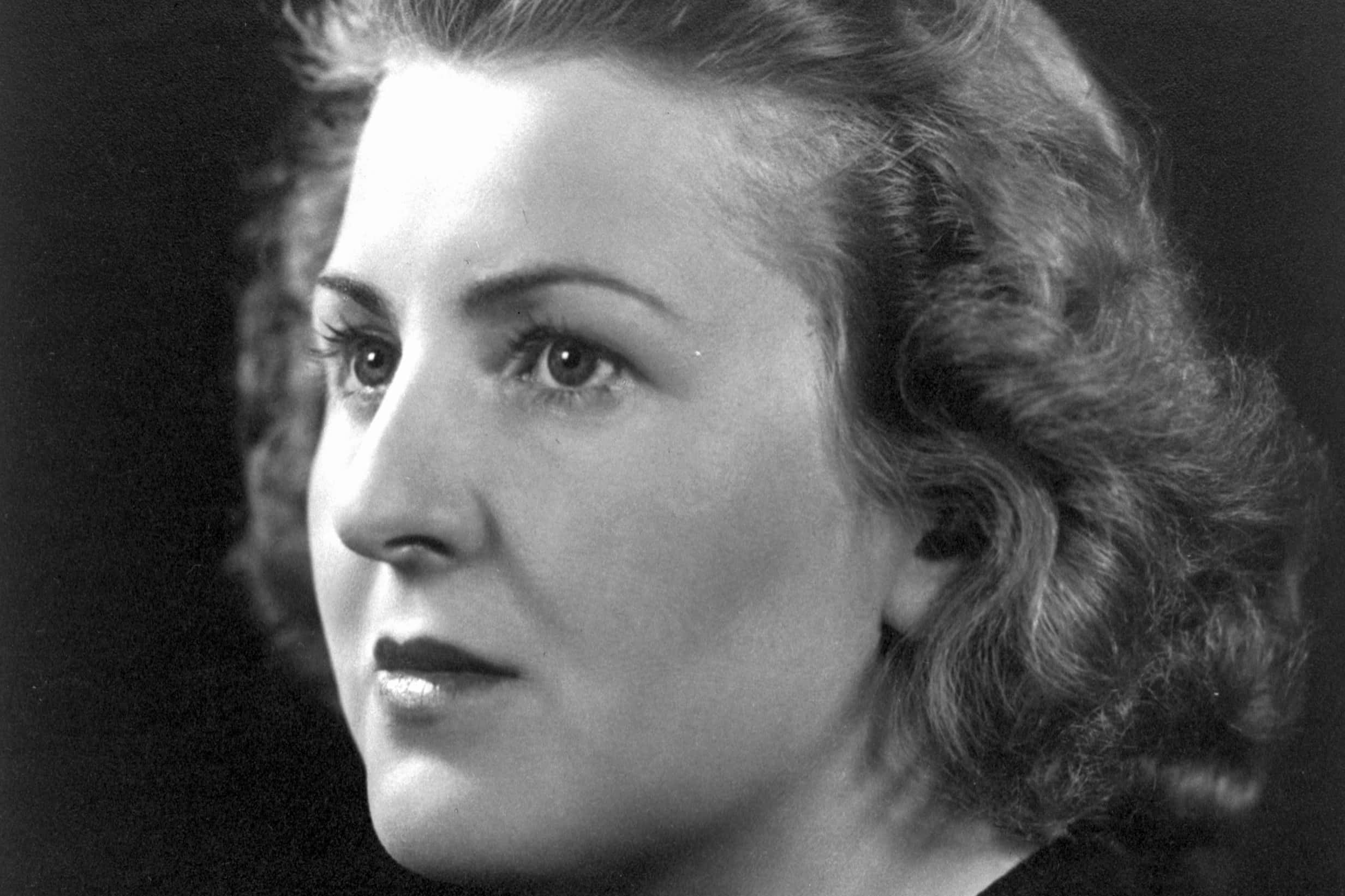
Eva Braun, born on February 6, 1912, in Munich, Germany, remains a figure shrouded in mystery. Known primarily as Adolf Hitler's companion and later his wife, her life offers a unique glimpse into the personal side of one of history's most infamous leaders. Despite her close relationship with Hitler, Braun led a relatively sheltered existence, often hidden from the public eye. She was not involved in Nazi politics and had no influence over Hitler's political decisions. Yet, her story is filled with intriguing details, from her early career as a photographer's assistant to her final days in the Führerbunker. Who was Eva Braun, really?
Early Life and Family Background
Eva Braun's early years set the stage for her later life. Born into a modest Bavarian family, her upbringing was typical for the time.
-
Birth and Early Life: Eva Braun was born on February 6, 1912, in Munich, Germany. She was the middle child among three sisters: Ilse, Gretl, and Eva herself.
-
Family Background: Her father, Friedrich Braun, worked as a school teacher, while her mother, Fanny Kronberger, was a seamstress. The family belonged to the lower-middle-class Bavarian community.
-
Parental Divorce and Remarriage: In 1921, Eva's parents divorced but remarried in November 1922, likely due to financial reasons during Germany's hyperinflation period.
-
Education: Eva attended a Catholic lyceum in Munich and later a business school at the Convent of the English Sisters in Simbach am Inn. She had average grades but excelled in athletics.
Career Beginnings and Meeting Hitler
Eva's career path and her fateful meeting with Adolf Hitler would change her life forever.
-
Career Beginnings: At 17, Eva Braun began working as a shop assistant and sales clerk at Heinrich Hoffmann's camera shop, the official photographer for the Nazi Party.
-
Meeting Hitler: In October 1929, Eva met Adolf Hitler at Hoffmann's studio in Munich. Introduced as "Herr Wolff," Hitler was 40, and Eva was just 17.
Relationship with Hitler
Eva Braun's relationship with Hitler was complex and often shrouded in mystery.
-
Relationship Development: Historians debate the exact nature of their relationship, but it's known that Braun became Hitler's mistress in the early 1930s after his previous mistress, Geli Raubal, committed suicide.
-
Suicide Attempts: Eva attempted suicide twice during her early relationship with Hitler. The first attempt was in 1932, and the second in 1935, both of which she survived.
-
Living Arrangements: By 1936, Braun had moved to Hitler's chalet, Berghof, in Berchtesgaden. She lived a sheltered life throughout World War II, often accompanying Hitler on trips to Obersalzberg.
Personal Life and Interests
Despite her significant role in Hitler's life, Eva Braun had her own interests and hobbies.
-
Domestic Life: Braun was not allowed to be seen in public with Hitler. She had no influence on his political life and was not a member of the Nazi Party.
-
Personal Interests: Eva was an accomplished swimmer and skier. She enjoyed outdoor activities and had a love for clothes, boys, and makeup.
-
Relationship Dynamics: Historian Heike Görtemaker suggests that Braun was more than just a decorative companion. She sympathized with Nazi politics and provided psychological support to Hitler.
-
Domestic Rows: Braun and Hitler had everyday rows over domestic details, including his vegetarian diet. Braun once said, "I can't eat that stuff."
-
Family Involvement: Braun's younger sister, Gretl, also worked for Hoffmann and often accompanied Eva on trips with Hitler to Obersalzberg.
Later Years and Final Days
As World War II drew to a close, Eva Braun's loyalty to Hitler remained unwavering.
-
Summer House: In the 1930s, Braun bought a summer house on the beach near Pobierowo (now in Poland), where she occasionally vacationed.
-
Hair Dye: Hitler's dentist, Hugo Blaschke, noted that Braun used peroxide to dye her hair blonde.
-
Family Survival: Eva's family survived the war. Her mother, Franziska, died aged 91 in January 1976, and her father, Fritz, died in 1964. Gretl gave birth to a daughter named Eva on May 5, 1945, and later married Kurt Beringhoff.
-
Elder Sister: Eva's elder sister, Ilse, was not part of Hitler's inner circle. She married twice and died in 1979.
-
Nazi Party Involvement: Despite being uninterested in politics, Braun occasionally showed interest in Nazi policies. In 1943, she approached Hitler in high indignation when it was suggested that the production of cosmetics and luxuries be banned. This led to a halt in the production of cosmetics instead of a complete ban.
-
Final Days of War: By late 1944, both the Red Army and the Western Allies were advancing into Germany. When Hoffmann's eldest daughter suggested that Braun go into hiding after the war, Braun replied, "Do you think I would let him die alone? I will stay with him up until the last moment."
-
Joining Hitler in Berlin: In April 1945, Braun joined Hitler at the Führerbunker in Berlin, despite his orders to stay away. She swore loyalty to Hitler and determined to stay with him until the end.
-
Wedding Ceremony: On April 29, 1945, Braun married Hitler during a brief civil ceremony in the Chancellery bunker. She was 33 years old, and he was 56.
-
Marriage Certificate: The marriage certificate was signed after midnight on April 28/29, 1945. Braun signed her name as "Eva B," before crossing out the "B" and replacing it with "Hitler."
-
Wedding Breakfast: A modest wedding breakfast was held in the bunker, but the atmosphere was tense due to the ongoing shelling by the Red Army.
-
Final Days: The next day, April 30, 1945, Braun and Hitler began saying goodbye to their staff. Braun instructed Hitler's secretary, Traudl Junge, to tell everyone that they were going to a bunker for a few days.
-
Suicide: At 1 pm on April 30, 1945, Braun and Hitler committed suicide together. Braun bit and swallowed a capsule of cyanide, while Hitler shot himself in the head.
-
Bodies Disposal: Their bodies were burned in the garden of the Reich Chancellery to prevent them from falling into enemy hands.
Legacy and Historical Perception
Eva Braun's legacy is complex, reflecting her unique position in history.
-
Historical Footage: Eva Braun recorded 16-millimeter home movie footage in color during her time at Berghof. This footage provides valuable insights into her personal life and stands in stark contrast to Nazi propaganda.
-
Photographs: Many surviving color photographs and films of Hitler were taken by Braun herself. These images offer a glimpse into her role as a photographer and her relationship with Hitler.
-
Biographical Works: The first comprehensive biography on Braun was written by Heike B. Gortemaker and published in 2011, titled Eva Braun: Life With Hitler.
-
Historical Perception: For decades, Braun has been portrayed as an apolitical "dumb blonde" whose attentions served as an occasional diversion for Hitler. However, historian Heike Görtemaker reveals Braun as a politically committed woman who won Hitler's affections and enjoyed a healthy sex life with him.
-
Nazi Ideology: The Nazi ideology often depicted women as having no place in government, relegating them to roles as homemakers. Braun's depiction mirrors this ideology, suggesting that she was not truly interested in politics despite occasional interventions.
-
Meeting Hitler’s Half-Niece: Braun resembled Hitler’s half-niece, Geli Raubal, who had been his mistress before her suicide in 1931. This resemblance may have contributed to Hitler’s growing closeness to Braun.
-
Domestic Life with Hitler: Braun lived a sheltered life with Hitler, often staying at his chalet, Berghof. She enjoyed domestic comforts and relaxation rather than eroticism, providing Hitler with a sense of normalcy amidst the chaos of war.
-
No Public Appearance: Hitler never allowed Braun to be seen in public with him or to accompany him to Berlin. This isolation was likely due to his desire to maintain a public image of a powerful leader without any personal entanglements.
-
No Influence on Politics: Despite her close relationship with Hitler, Braun had no influence on his political life. She was not a member of the Nazi Party and did not participate in any political meetings or decisions.
-
Psychological Support: Historian Heike Görtemaker suggests that Braun provided psychological support to Hitler, helping him cope with the pressures of leadership. This support was crucial during the final days of the war.
-
Row Over Vegetarian Diet: Braun and Hitler had everyday rows over domestic details, including his vegetarian diet. Braun once said, "I can't eat that stuff," reflecting her refusal to adopt his dietary preferences.
-
Presence at Meetings: Görtemaker claims that Braun was present at meetings between Hitler and high-ranking Nazis, indicating her involvement in the inner workings of the Nazi regime despite her lack of formal membership.
-
Legacy: Eva Braun's legacy is complex and multifaceted. She remains a symbol of the personal side of Adolf Hitler, highlighting the human aspects of one of history’s most reviled figures. Her story serves as a reminder of the intricate web of relationships and personal dynamics that underpinned the Nazi regime.
Eva Braun's Complex Legacy
Eva Braun's life is a fascinating blend of personal choices and historical events. Born in Munich, she met Adolf Hitler at 17 and became his mistress, eventually marrying him just before their deaths. Despite her close relationship with Hitler, she had no political influence and lived a sheltered life. Braun's interests in photography, swimming, and skiing painted her as more than just a figure in Hitler's shadow. Her story, captured in home movies and photographs, offers a unique glimpse into the private life of one of history's most infamous leaders. Braun's legacy is complex, reflecting the personal side of a regime marked by terror and war. Her life and choices continue to intrigue historians and the public, reminding us of the intricate human dynamics behind historical events.
Was this page helpful?
Our commitment to delivering trustworthy and engaging content is at the heart of what we do. Each fact on our site is contributed by real users like you, bringing a wealth of diverse insights and information. To ensure the highest standards of accuracy and reliability, our dedicated editors meticulously review each submission. This process guarantees that the facts we share are not only fascinating but also credible. Trust in our commitment to quality and authenticity as you explore and learn with us.


